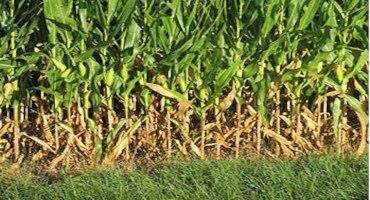The latest Drought Monitor indicates continuing drought in Northwest Iowa. Corn fields are beginning to dry down, but appearance can be misleading when making corn silage, according to Beth Doran, beef specialist with Iowa State University Extension and Outreach, and she reminds producers that the rules for good corn silage still apply.

Harvest at the optimum moisture. This would be 65-70% moisture for a bunker silo or 60-70% for a bag. Silage that is too wet will become putrid and seep excessively. If too dry, the silage does not pack well and will mold.
Increase the cutting height. Corn plants are traditionally cut 6” above the soil surface, but this is not a traditional year. To reduce nitrate levels in the chopped material, cutting height should be 12 to 18 inches. Yield is reduced, but so are the nitrate levels.
Adjust the length of cut for the chopper. Corn silage harvested with a conventional chopper (without a corn processor) should have a 3/8” theoretical length of cut. If a kernel processor is used, the optimum length is ¾”.
Kernel processing increases starch digestibility. The value of kernel processing increases when the moisture content is below 67%. Another plus for kernel processing is the reduction in cob sorting when the silage is fed.
Consider an inoculant. Inoculants can reduce the pH of the silage and inhibit yeast and mold growth. This helps increase the storage life of the silage.
Packing is critical. Dry matter loss during storage increases as the density of the silage decreases. The recommended minimum density of wet corn silage is 14 lb per cubic foot.
Cover silage in bunkers, trenches and piles. Do this as soon as possible after filling and anchor the plastic with dirt, tires or other heavy items to protect it from wind damage.
Click here to see more...